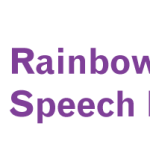Our Blogs
NEURODIVERSITY AFFIRMING THERAPY
As neurodiversity affirming therapists, we celebrate our clients unique and wonderful differences while still advocating for supports and services that empower them to achieve their goals and lead happy and fulfilling lives.
Speech therapy that is neurodiversity-affirming doesn’t aim to change a neurodiverse person or to hide their differences to become more ‘typical’ but instead values teaching an understanding of the different communication styles between neurotypical and neurodiverse peoples. Neurodiversity affirming therapy also focuses on supporting neurodiverse people to self-advocate; to understand their own communication styles and individual strengths and challenges, and to feel confident advocating for themselves. In therapy this might look like:
- Supporting families to figure out what their child is trying to communicate through their behaviours.
- Teaching neurodiverse people and their loved ones about the differences in communication styles between neurodiverse and neurotypical people.
- Teaching how to interpret indirect language (sarcasm, metaphors, implied meaning) and body language (facial expressions, tone of voice, posture and body positioning) in others (and how this might differ between people). Awareness of different communication styles and developing perspective taking skills can support people to navigate social situations more confidently.
- Supporting neurodiverse people to self-advocate. For example, being able to tell people “I listen best when I am moving” or asking for clarification “Sometimes I find it hard to work out how people are feeling, it helps me if you can tell me directly”.
A study by Crompton & Fletcher Watson (2020) looking at the efficiency of transferring information between different groups of people found that when autistic people shared information with other autistic people they were just as effective at getting the message across as the non-autistic groups. The least efficient transfer of information occurred between the autistic and non-autistic group (which represents the world we live in). This study highlights that communication is two-way – a shared responsibility between all involved. Neurodiversity affirming therapy supports neurodiverse individuals to learn more about different communication styles, but also encourages neurotypical people to understand more about neurodiverse communication styles.
Learn more about neurodiversity affirming therapy https://therapistndc.org/neurodiversity-affirming-therapy/
Children’s books about neurodiversity:
- Do You Want to Play? Making Friends with an Autistic Kid by Daniel Share-Strom
- Just Right for You: A Story About Autism by Melanie Heyworth
- Jordan’s World: The boy who couldn’t speak, yet. By Jordan Christian LeVan (Childhood apraxia of speech)
- DLD Why Can’t You See Me? By Shelbi Annison
Written by: Samantha Bolton – Speech Pathologist


